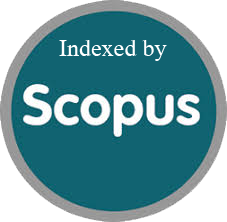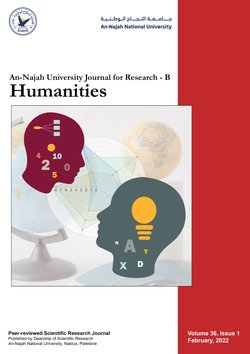An Analytical Comparison between Cubism and Purism in Modern Plastic Art
Authors:
Article info
2024-02-13
2024-08-18
2024-10-13
231 - 242
Keywords
- Purism
- Cubism
- Modern Art
- Post-Cubism
Abstract
Objective: This study aims to present a visual analytical model for exploring artistic techniques within various intellectual contexts between Cubism and Purism. It seeks to clarify how Purism addressed the dilemma of reinterpreting cultural heritage within a new artistic framework that meets the demands of the present and future. Methodology: The study followed an analytical approach to a selected group of artworks representing the Purist movement from its inception to its early dissolution. It also compared these works with Cubist artworks, which initially emerged as a critique of the Cubist school. The study discusses the approach of both movements and highlights their roles in shaping modern painting as a response to the profound social changes that French society experienced before and after World War I. Results: Cubism played a pioneering role in revolutionizing modern visual arts by introducing a new perspective on reality. This vision was based on capturing multiple perspectives at once, going beyond three dimensions to reach the concept of the fourth dimension. In contrast, Purism crafted a visual language that effectively combined modernity and classicism, focusing on order, harmony, precision, and balance within a modern vision. As technology infiltrated all aspects of life, Purist pioneers took industrially produced elements as primary subjects in their artwork, reflecting the deep connection between modern humans and machines. This also underscores the irreversible dominance of production forces over the interaction of bodies and minds with their surrounding environment. Recommendations: The study recommended that researchers and specialists discuss the role of both movements in shaping the visual image in modern and contemporary societies by organizing workshops and educational seminars. It also called for field research that includes interviews with contemporary artists to explore the mechanisms of using Cubist and Purist techniques in their artistic production.
Abualrob, A. O. (2024). An Analytical Comparison between Cubism and Purism in Modern Plastic Art. An-Najah University Journal for Research - B (Humanities), 39(4), 231–242. https://doi.org/10.35552/0247.39.4.2332
[1]A. O. Abualrob, “An Analytical Comparison between Cubism and Purism in Modern Plastic Art,” An-Najah University Journal for Research - B (Humanities), vol. 39, no. 4, pp. 231–242, Oct. 2024, doi: 10.35552/0247.39.4.2332.
Abualrob, Ahmed O. “An Analytical Comparison between Cubism and Purism in Modern Plastic Art.” An-Najah University Journal for Research - B (Humanities), vol. 39, no. 4, Oct. 2024, pp. 231–42. Crossref, https://doi.org/10.35552/0247.39.4.2332.
1.Abualrob AO. An Analytical Comparison between Cubism and Purism in Modern Plastic Art. An-Najah University Journal for Research - B (Humanities) [Internet]. 2024 Oct;39(4):231–42. Available from: http://dx.doi.org/10.35552/0247.39.4.2332
Abualrob, Ahmed O. “An Analytical Comparison between Cubism and Purism in Modern Plastic Art.” An-Najah University Journal for Research - B (Humanities) 39, no. 4 (October 2024): 231–42. https://doi.org/10.35552/0247.39.4.2332.
مقارنة تحليلية بين التكعيبية والنقائية في الفن التشكيلي الحديث
المؤلفون:
معلومات المقال
2024-02-13
2024-08-18
2024-10-13
231 - 242
الكلمات الإفتتاحية
- Purism
- Cubism
- Modern Art
- Post-Cubism
الملخص
الهدف: تقديم نموذج تحليلي بصري لاستكشاف التقنيات الفنية في سياقات فكرية متنوعة بين التكعيبية والنقائية، وتوضيح كيفية معالجة النقائية لمعضلة إعادة صياغة الموروث الثقافي ضمن إطار فني جديد يواكب متطلبات الحاضر والمستقبل. المنهجية: اتبعت الدراسة المنهج التحليلي لمجموعة مختارة من الأعمال الفنية التي تمثل الحركة النقائية منذ نشأتها وحتى بدايات تفككها المبكر، مع مقارنتها بالأعمال التكعيبية التي انبثقت في الأصل من نقدها للمدرسة التكعيبية. تناقش الدراسة نهج كل من الحركتين الفنيتين وتستعرض أدوارهما في تشكيل اللوحة التشكيلية كرد فعل للتحولات العميقة التي شهدها المجتمع الفرنسي قبل الحرب العالمية الأولى وبعدها. النتائج: لعبت التكعيبية دورا رياديا في إحداث ثورة في الفنون البصرية الحديثة من خلال ابتكار رؤية جديدة للواقع، ترتكز على تسجيل المنظورات المتعددة في لحظة واحدة، متجاوزة الأبعاد الثلاثة، للوصول إلى مفهوم البعد الرابع. في المقابل، صاغت النقائية لغة بصرية تجمع بفعالية بين الحداثة والكلاسيكية، من خلال التركيز على النظام، الانسجام، الدقة، والتوازن برؤية حديثة. وفي ظل تغلغل التكنولوجيا في كافة جوانب الحياة، اتخذ رواد النقائية العناصر المنتجة صناعيًا مواضيع رئيسية في أعمالهم الفنية، مما يعكس الارتباط العميق بين الإنسان الحديث والآلة، وسيطرة قوى الإنتاج على تفاعل الأجساد والعقول مع البيئة المحيطة بشكل لا رجعة فيه. التوصيات: أوصت الدراسة الباحثين والمتخصصين بأهمية مناقشة دور كل من الحركتين في صياغة الصورة البصرية في المجتمعين الحديث والمعاصر، من خلال تنظيم ورش عمل وندوات تعليمية. كما دعت إلى إجراء بحوث ميدانية تتضمن مقابلات مع فنانين معاصرين لاستكشاف آليات استخدام التقنيات التكعيبية والنقائية في إنتاجهم الفني.
Abualrob, A. O. (2024). An Analytical Comparison between Cubism and Purism in Modern Plastic Art. An-Najah University Journal for Research - B (Humanities), 39(4), 231–242. https://doi.org/10.35552/0247.39.4.2332
[1]A. O. Abualrob, “An Analytical Comparison between Cubism and Purism in Modern Plastic Art,” An-Najah University Journal for Research - B (Humanities), vol. 39, no. 4, pp. 231–242, Oct. 2024, doi: 10.35552/0247.39.4.2332.
Abualrob, Ahmed O. “An Analytical Comparison between Cubism and Purism in Modern Plastic Art.” An-Najah University Journal for Research - B (Humanities), vol. 39, no. 4, Oct. 2024, pp. 231–42. Crossref, https://doi.org/10.35552/0247.39.4.2332.
1.Abualrob AO. An Analytical Comparison between Cubism and Purism in Modern Plastic Art. An-Najah University Journal for Research - B (Humanities) [Internet]. 2024 Oct;39(4):231–42. Available from: http://dx.doi.org/10.35552/0247.39.4.2332
Abualrob, Ahmed O. “An Analytical Comparison between Cubism and Purism in Modern Plastic Art.” An-Najah University Journal for Research - B (Humanities) 39, no. 4 (October 2024): 231–42. https://doi.org/10.35552/0247.39.4.2332.

Since 2019
Cite Score (Scopus): 0.5
Time to First Decision: 7 Days
Submission to Acceptance: 60 Days
Acceptance to Publication: 10 Days
Acceptance Rate: 20%
Call for Papers:
Special Issue on
Innovative Assessment in the Age of AI: Strategies for Quality
Why should you
Publish With Us?
An-Najah National University
Nablus, Palestine
Nablus, Palestine
- P.O. Box
- 7, 707
- Fax
- (970)(9)2345982
- Tel.
- (970)(9)2345560
- (970)(9)2345113/5/6/7-Ext. 2628
- [email protected]
- EIC
- Prof. Waleed Sweileh
